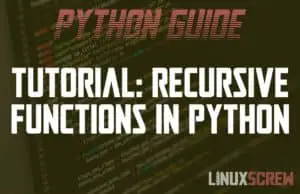Home » Programming » Python
Checking If A File Exists in Python, With Examples
This article will outline several methods which can be used to check that a file exists/is readable in the Python programming language. You may wish to check whether a file exists before reading or writing to it to reduce the number of alerts you need to display to the user or to make sure you aren’t accidentally overwriting an existing file (or a combination of both, letting the user know a file already exists and giving them a choice to overwrite it). Using pathlib to Check if … Read more









![Converting Bytes To String In Python [Guide] 9 Converting Bytes To String](https://cd.linuxscrew.com/wp-content/uploads/2021/03/Converting-Bytes-To-String-300x194.png)
![Checking Type in Python [Guide] 10 Checking Type in Python](https://cd.linuxscrew.com/wp-content/uploads/2021/03/Checking-Type-in-Python-300x194.png)